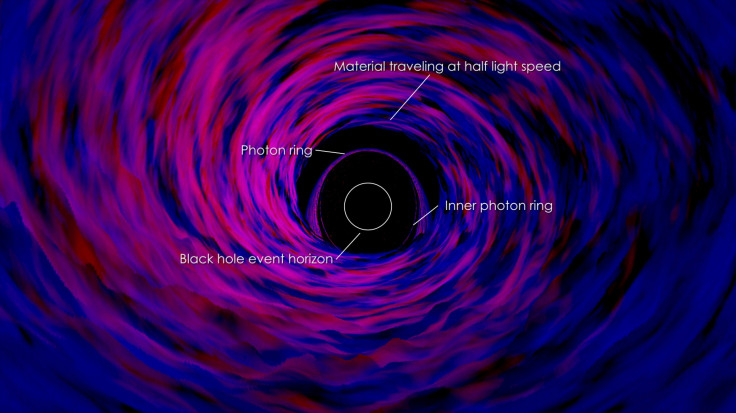Black Holes Get Dissected In New NASA Study [VIDEO]
Black holes are an interesting and mystifying phenomenon that have been the center of research since they were first discovered. NASA has been able to put decades of research into a supercomputer simulation to better understand black holes.

Black holes are, essentially, gravity vortexes that prevent any light or mass from escaping. As to how they are formed, theories include the gravitational collapse of a large star, collision between galaxies or the sheer density of material present shortly after the Big Bang. Black holes are observed indirectly, through the radiation given off by stars as they are consumed or through predicting a black hole’s existence due to the effect of gravity on its neighbors.
The new analysis of black holes was conducted by astronomers from NASA, Johns Hopkins University and the Rochester Institute of Technology and was led by astrophysicist Jeremy Schnittman, from NASA's Goddard Space Flight Center. The study was published in the Astrophysical Journal. The research observed gas on the edge of a black hole, one of the most hostile environments in nature, and could prove to be a useful way to study black holes.
NASA’s simulation follows gas as it reaches the accretion disk, or zone of material that has been pulled in by gravity, of a black hole. In that zone, gas is heated up to 20 million degrees Fahrenheit, giving off soft X-rays, according to NASA’s release. As the dust gets sucked into the center of the black hole, traveling close to the speed of light, it begins to give off harder X-rays, hundreds of times stronger than those found in the accretion disk. This area near the center, known as the corona, is made up of extremely hot gas, with temperatures in the billions of degrees, NASA notes.
Past the corona is the event horizon, where all matter and light go inward due to the sheer force of gravity. The simulation helped solved the mystery surrounding soft and hard X-rays being emitted by the black hole, explaining its cause as a result of gas traveling inward to the center of the black hole.
Julian Krolik, from Johns Hopkins, and Scott Noble, from RIT, created the simulation. Noble was able to create algorithms that replicated the complex nature, including the varying temperatures and effects of gravity, as well as the shifting magnetic fields. These magnetic fields are intensified as gas travels to the center and the researchers were able to track the different properties of the gas.
The astronomers were able to confirm the hypothesis surrounding a black hole’s corona, similar to that of our Sun’s corona, above the accretion disk as a result of the intensifying magnetic fields. It is believed the soft X-rays hit fast-moving electrons, thus increasing their energy.
Krolik said, “Black holes are truly exotic, with extraordinarily high temperatures, incredibly rapid motions and gravity exhibiting the full weirdness of general relativity,” Krolik said. “But our calculations show we can understand a lot about them using only standard physics principles.”
© Copyright IBTimes 2024. All rights reserved.








